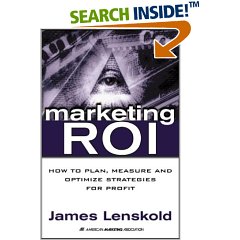 |
| |||||||||||||||||||||||||
|
Greetings, In this Issue...

A mainstay in strategic planning is SWOT analysis, which is analysis of internal Strengths and Weaknesses, and external Opportunities and Threats. While frequently done, this activity is often poorly applied and the resulting under-utilization of the SWOT analysis potential has given the process a lackluster name with some who have used it. Here are five guidelines for maximizing the yield from your SWOT analysis.

The Strategic Marketing Plan is the cornerstone of all Marketing activities. This Boot Camp focuses on the practical tools, techniques and processes for developing clear, distinctive and integrated strategic marketing plans that have buy-in throughout the organization. Participants reinforce their learning by documenting key elements of their plan including: business definition and scope, vision, business objectives, SWOT analysis, segmentation, positioning, marketing mix strategies by segment, key success factors and risks and contingency plans. In the Boot Camp you will learn ‘how to’, apply what you learn to your business, and go back to the office with the core of a plan that you can apply immediately. Strategic Marketing Boot Camp™ is being offered on May 8-10, 2006, at the Boston Newton Marriott, Newton, MA.

The book “Marketing ROI – The Path To Campaign, Customer, and Corporate Profitability”, by James D. Lenskold, McGraw Hill, addresses an idea whose time has come. Increasingly, marketing is viewed not as an expense, but as an investment, subject to the scrupulous analyses and selection processes applied to other business investments. The stated goal of the book is “to serve as a comprehensive guide for effectively using marketing ROI to improve profitability”. By covering a range of marketing Return On Investment techniques and insights, it goes a long way towards meeting its goal and advancing the practice of marketing ROI. The author concedes that there is no magic formula to convert soft marketing metrics such as awareness and satisfaction into an ROI equation. His stated intention is to improve the financial value of marketing investments wherever possible and recognize that other decisions will still need to be subjective or rely on non-financial value. It recognizes that there are limitations to the effectiveness of marketing ROI practices, especially for companies that don’t have measurements and analyses of past marketing investments. For these, the book presents tools and measurement techniques that facilitate the development of better strategies. The book has three sections:
Lenskold introduces a badly needed level of financial rigor into what is typically an imprecise process of selecting marketing investments, and then measuring their impact on profits. Among the key concepts he develops are the elements of the marketing ROI formula with its important subtleties, as well as the eye opening and non-intuitive discoveries you might get from analyzing incremental marketing investments and their incremental effect on sales and profitability. We recommend this book for its major strides in advancing the practice of Marketing ROI. View book on
Amazon.com...
| |||||||||||||||||||||||||